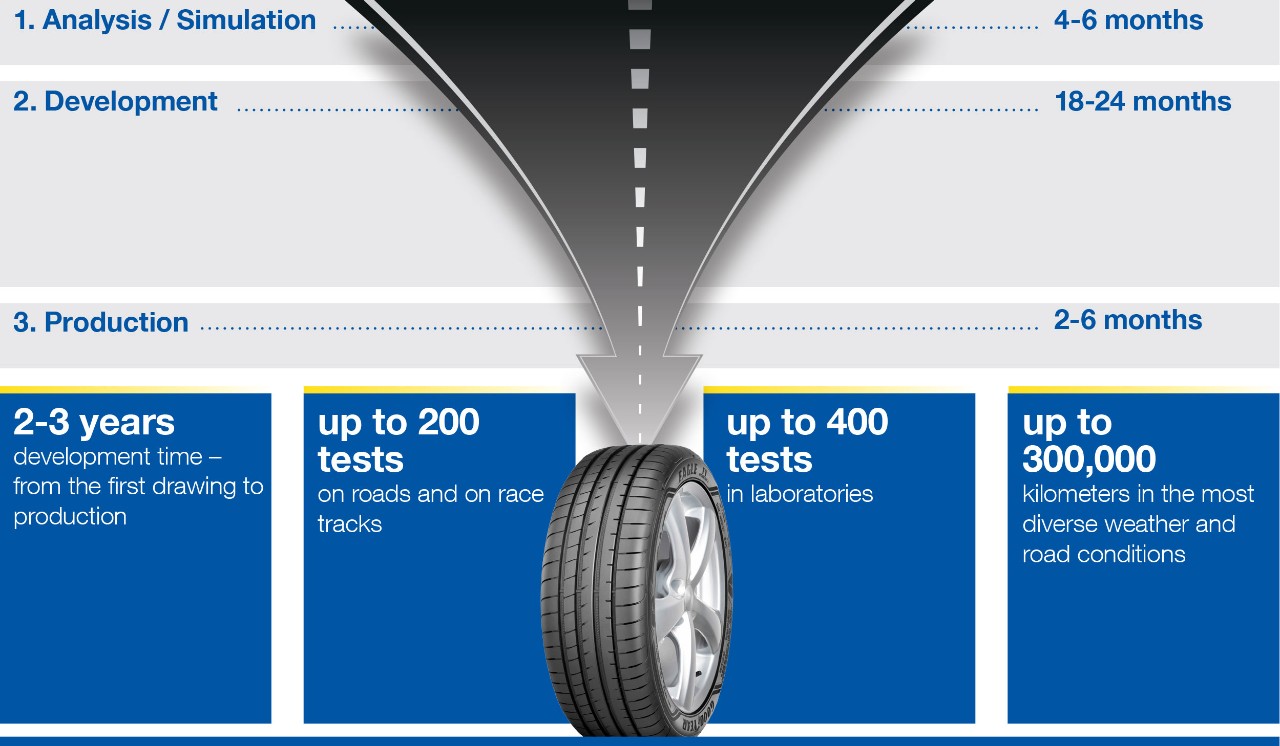Original Equipment (OE) refers to the parts that your vehicle was fitted with at the factory. It can include various parts of the car, from key components under the bonnet to the tyres the vehicle is fitted with.
The OE process itself can take several years to complete and includes hundreds of tests on the road and in lab conditions. For tyres specifically, automotive engineers and tyre designers work together early in the design process to create a tyre that is specifically engineered for a vehicle.
During this cycle, the tyre manufacturer will look at various aspects of the tyre’s performance and how it affects the intended vehicle. These performance qualities include dry braking, wet braking, dry handling, wet handling, NVH (noise vibration and harshness), rolling resistance and treadwear.
Through the OE process, prototype tyres can clock up hundreds of thousands of miles in diverse weather conditions to ensure they will provide optimal performance.
Goodyear is one of the leading brands in OE with over 600 approvals from more than 30 vehicle manufacturers.
Learn more about the OE tyre process in this video by Jon Benson from Tyre Reviews:









